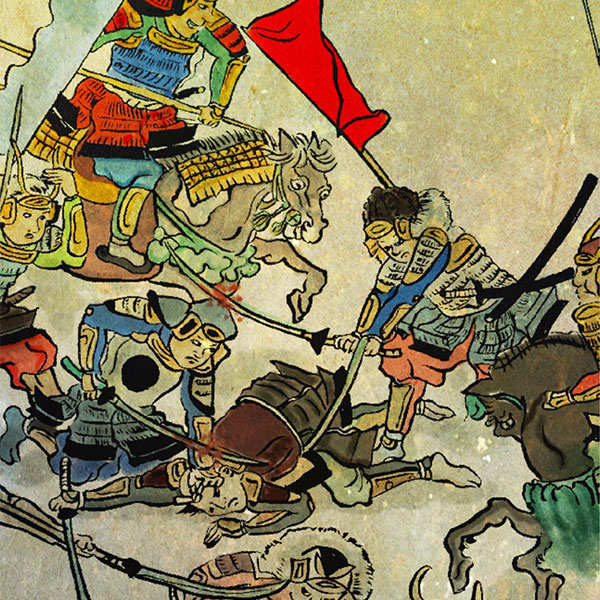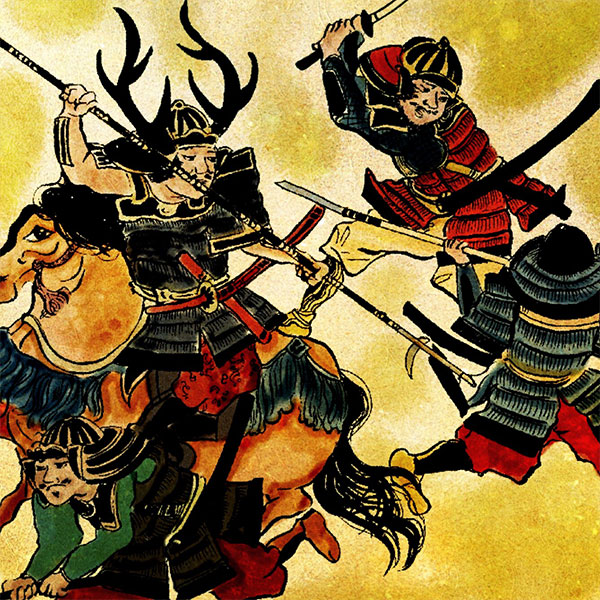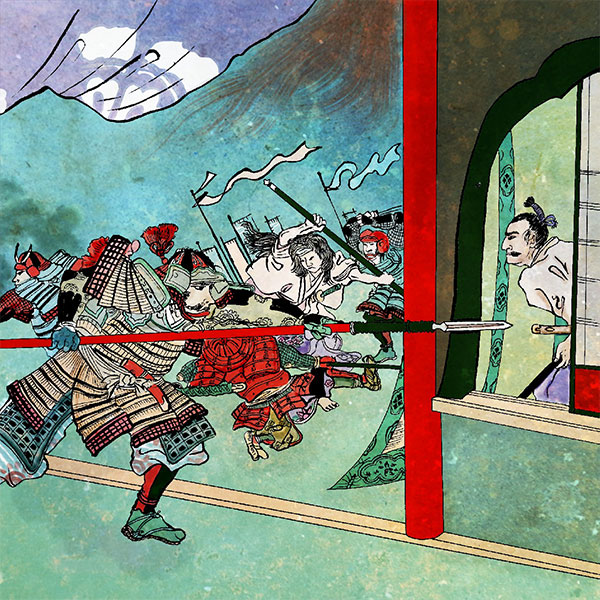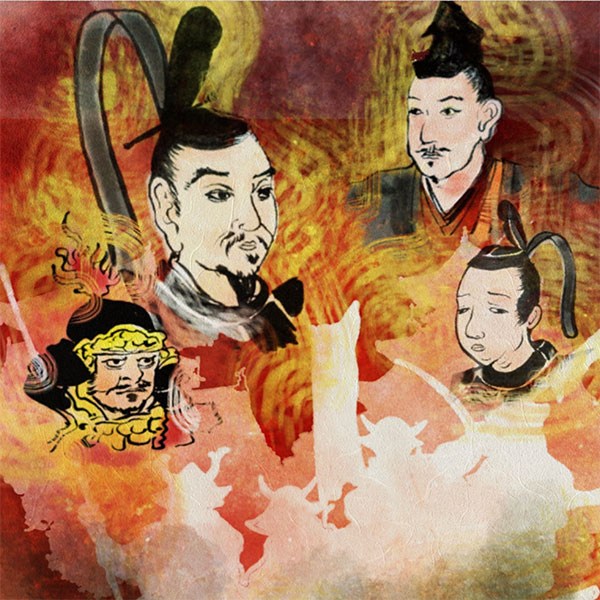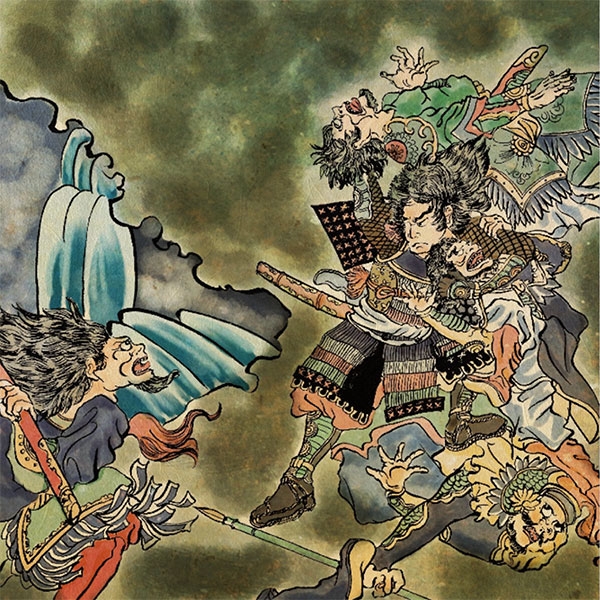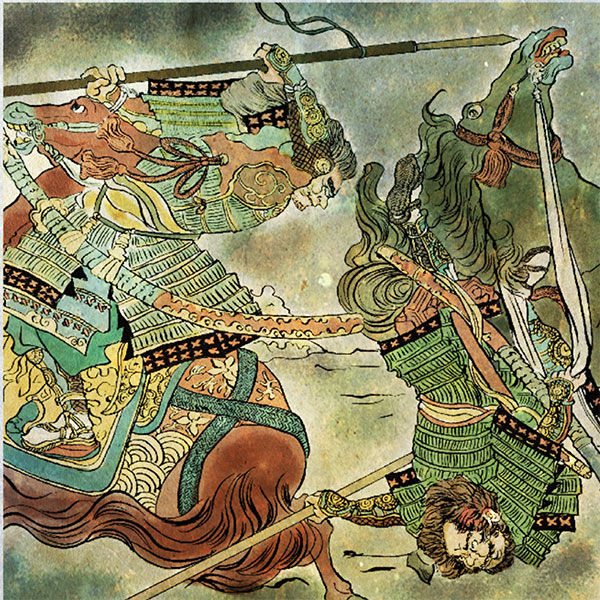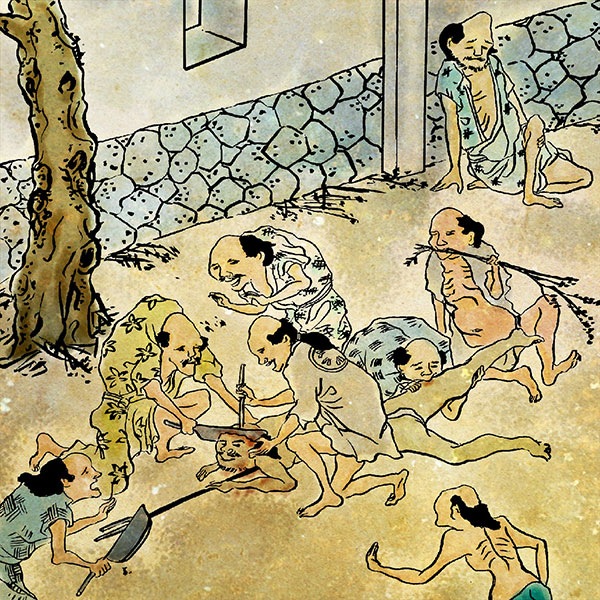Terumoto Mouri (2/2)Prince of the Chugoku region
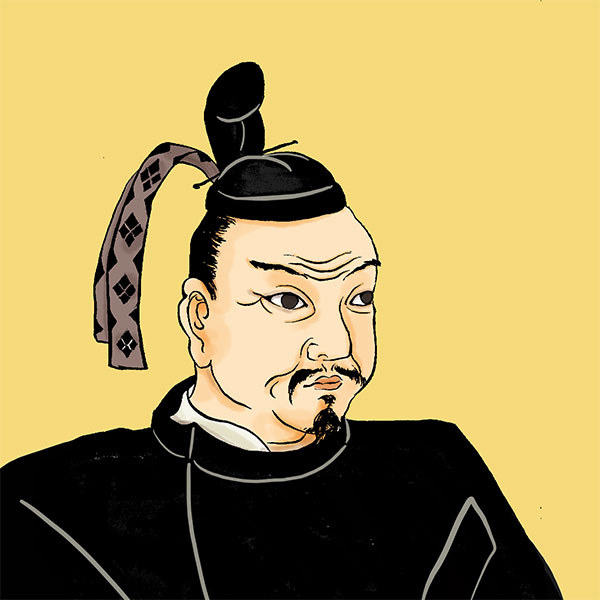
Terumoto Mouri
- Article category
- biography
- name
- Terumoto Mori (1553-1625)
- place of birth
- Hiroshima
- Related castles

Hagi castle ruins

Hiroshima castle

Osaka Castle
- related incident
In May 1600, Ieyasu urged Kagekatsu Uesugi in Yonezawa to come to Kyoto to question him, but Kagekatsu refused. Using this refusal as a reason to rebel against Hideyori, Ieyasu dispatched troops to Aizu with the generals to subjugate Uesugi.
The following June, Terumoto consulted with Ishida Mitsunari and others and launched an army against Tokugawa Ieyasu. Many generals gathered in this anti-Tokugawa movement, and Terumoto Mori was chosen as the supreme general. Terumoto commanded the western army from Osaka Castle, dispatching the Mori family's troops and moving the armies of various generals, but until the end Terumoto himself never moved from Osaka Castle.
In September of the same year, Tokugawa Ieyasu and Ishida Mitsunari clashed at Sekigahara, with Ieyasu winning. Terumoto Mori, who was an anti-Tokugawa faction, retired from Osaka Castle and moved to the Mori family mansion in Osaka after his army was defeated at Sekigahara.
In this way, Terumoto Mori was given the responsibility of being the commander-in-chief, apart from Mitsunari Ishida, who was the mastermind of the Battle of Sekigahara.
Terumoto's end
After the Battle of Sekigahara, Terumoto Mori was forced into the difficult position of being the supreme commander who faced off against the Tokugawa clan and lost the Battle of Sekigahara.
In October 1600, the Mori clan's territory was reduced from the Chugoku region to Suo and Nagato (present-day Yamaguchi Prefecture). Furthermore, Terumoto acknowledged his responsibility, became a monk and handed over the headship of the family to his eldest son, Hidenari. From this point on, the Mori family established a two-headed system of Terumoto and Hidenari. In the 8th year of Keicho era (1603), he decided to build his castle in Hagi and began construction.
When the Osaka Campaign began, Terumoto also tried to march into Osaka as the general of the Mori family, but he fell ill and his son Hidenari went to war as the general of the Mori family. During this time, or even after the Osaka Siege, Terumoto had a problem.
Terumoto's vassals who are in charge of business affairs under Terumoto, vassals who have served the Mori family for a long time, relatives of the Mori family,
This is an internal conflict that supports the Mori family, such as vassals who later came to support the Mori family. While Terumoto tried to reconcile this problem, he also tried to control his vassals by pursuing them and forcing them to commit suicide.
In this way, Terumoto took steps to avoid arousing the suspicions of the Edo shogunate, and at the same time struggled to control his vassals.In 1623, Terumoto formally handed over the headship of the family to Hidenari, who had returned to his hometown from Edo for a short time. He passed away in April of the 2nd year of the Kan'ei era (1625) at the age of 73.
This is how the life of Terumoto Mori, who fought in the Chugoku region from the Sengoku period through Sekigahara to the Edo period, came to an end. His remains were buried at Tenjuin Temple in Hagi, and his grave is still there (formerly Tenjuin Temple).
Hiroshima castle
The Mori family had a strong mountain castle in Yoshida-koriyama, which connects Sanyo-do and Sanin-do in Aki Province. However, when Toyotomi Hideyoshi took control of the country and there were no more battles, the role of castles changed from being solid to becoming symbols of political and commercial centers.
Therefore, Terumoto Mori considered moving his base to the seaside, where he could expand his castle town and be closer to the Seto Inland Sea trade route. Furthermore, in 1588, Terumoto is said to have visited Osaka Castle and Jurakudai, keenly realizing the importance of early modern castles, and decided to build a new castle. In 1589, after surveying the land on which to build a castle within the territory, they decided to build a castle in Goka Village, the ``largest island area,'' and began construction. Construction of the castle was completed in 1599, and from around this time it became known as Hiroshima.
However, in the Battle of Sekigahara, the Mori family was held responsible and their territory was reduced. Aki Province came to be ruled by Masanori Fukushima, and Hiroshima Castle was also rebuilt by Masanori. It is said that the prototype for the current large-scale town centered on Hiroshima Castle was created at this time, but Ieyasu was furious because the shogunate had not been notified of this large-scale renovation.
Furthermore, in 1619, Masanori Fukushima renovated the area due to flooding, but since this was also not reported, Masanori had his territory confiscated. The Asano family moved in after Masanori Fukushima. After entering Hiroshima Castle, the Asano family continued to rule until the Meiji era.
Another name for Hiroshima Castle is ``Carp Castle,'' and it is said that it was called that because the castle was black in color and because there were a lot of carp in the moat.
Even today, there are many names associated with Koijo, such as Koijo Street and Koijo Kaikan, and the carp (carp) of the professional baseball team Hiroshima Toyo Carp is said to have come from here.
Hagi Castle
After losing at the Battle of Sekigahara, Terumoto Mori, the commander-in-chief of the Western Army, had his territory reduced to two countries: Suo Province and Nagato Province. Therefore, Hagi Castle was built as a new base from Hiroshima Castle. Construction of the castle began in 1604, and Mori Terumoto, who had moved from Aki Province, entered the castle at this time, and construction was completed in 1608.
Hagi Castle consists of a mountain castle on Mt. Shigetsu and a flat castle at the foot of the mountain, and the main shrine in the flat castle served as the feudal lord's residence and government office, and served as the base of government until the end of the Edo period. However, in 1863, at the end of the Edo period, the Mori family moved their domain base from Hagi to Yamaguchi without notifying the Shogunate. Thus, Hagi Castle ended its role as the domain's base.
Further into the Meiji period, in 1874, Hagi Castle was demolished, leaving only its stone walls and moat, due to the castle abolition ordinance. Today, the castle ruins have been developed as Shizuki Park and are used as a place for citizens to relax.
Terumoto Mouri bronze statue in Kozuki Park
So, what kind of person was Terumoto Mouri?
The Mori family continued to maintain a position similar to that of Terumoto's grandfather, Motonari Mori, and his father, Takamoto Mori, who were local feudal lords. However, Terumoto was given an epithet by Yoshiteru Ashikaga, a general of the Muromachi shogunate, so he became a feudal lord who ruled the country from the beginning.
In his personal review of Teru Won, Kang Hyun, who was captured during the Joseon Dynasty, described Teru Won in his ``Guanyanglu'' as being ``pure, laid-back, and generous, and very similar in character to the people of our country (Korea).'' '', indicating that he was a person with deep pockets. Similarly, Jiang Xi, upon seeing the prosperity of Hiroshima, appears to have been seen as a daimyo with great governance skills, as he wrote in the ``Kanyouroku'' that ``It is superior in material resources and rich and can be compared to the capital.''
What kind of appearance did Terumoto have? The statue of Terumoto was erected as a bronze statue at the Ninomaru Minamimonzeki in Shizuki Park, the ruins of Hagi Castle, and retains the strict appearance of those days.
Hagi period festival
Hagi City, Yamaguchi Prefecture, was the domain office of the Mori family for about 250 years after Terumoto Mori moved there from Aki Province. The Hagi Era Festival, which is held every November, is a festival that shows the appearance of those days.
A procession of 200 people wearing yakuza, hakama, and kimono carrying palanquins parades through the castle town.
In addition, in the afternoon, the ``Hagi Period Parade'' will be held from Central Park towards Kanaya Tenmangu Shrine, featuring Mori feudal lords, Kiheitai led by Shinsaku Takasugi who was active at the end of the Edo period, and a procession of Hagi feudal lords. Masu.
Reread Terumoto Mouri's article
- related incident

- WriterTomoyo Hazuki(Writer)I have loved history and geography since my student days, and have enjoyed visiting historical sites, temples and shrines, and researching ancient documents. He is especially strong in medieval Japanese history and European history in world history, and has read a wide range of things, including primary sources and historical entertainment novels. There are so many favorite military commanders and castles that I can't name them, but I especially like Hisashi Matsunaga and Mitsuhide Akechi, and when it comes to castles, I like Hikone Castle and Fushimi Castle. Once you start talking about the lives of warlords and the history of castles, there's a side of you that can't stop talking about them.





